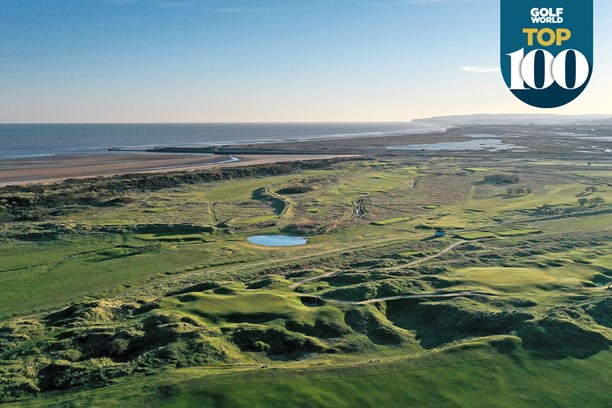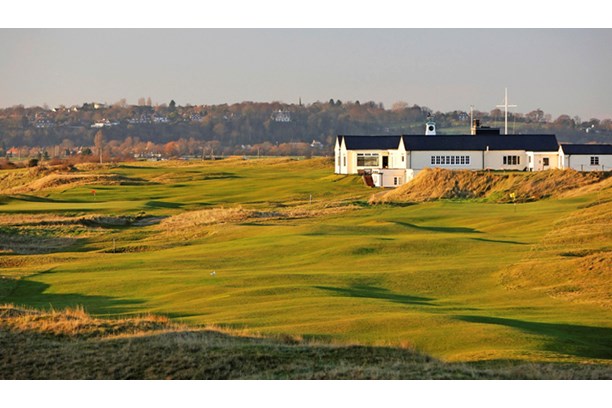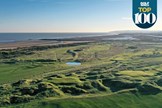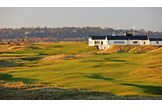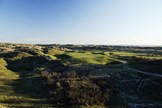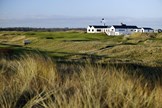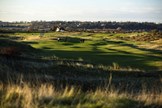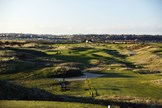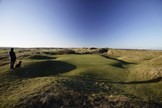Rye Golf Club
Last updated:
What we say
Rye Golf Club was Harry Colt’s first course design and, in many ways, it is still amongst his best.
Rye Golf Club is the Sussex links where it all began for the man regarded by some as the most important architect in the history of golf course design.
Harry Shapland Colt was just 25 when he combined the work he had only recently started as a lawyer in the nearby town of Hastings to set down a course along the Camber sands on the East Sussex coast.
Colt had qualified as a lawyer at Cambridge, where he was a Blue and captained the golf team, and a career in the legal profession beckoned. But discovering this ribbon of linksland near the cinque port of Rye with his new work colleagues was to quickly change his life – and make a deeply significant and enduring impact on the game at home and abroad.
Golf World Top 100: Best Golf Courses & Resorts
Colt – a fine golfer who had tied for 38th in the 1891 Open Championship at St Andrews – was sufficiently well regarded by his peers to be invited by his fellow members of the newly-formed Rye Golf Club to lay out its first proper course in 1895 (a rudimentary layout had been created the previous year).
Satisfied with his work, he then took on the secretary’s job, a role he filled for seven years before moving to Sunningdale and from there further afield, in doing so indubitably becoming one of the most influential architects in the game’s history.
That Rye was his debut illustrates Colt’s natural empathy with, and nous for, working land into outstanding golf course; here, the dune ridges that run through the property make it an awkward site to handle yet he did so with elan and flair.
It must be noted that his original layout does not wholly survive. It was lengthened in 1907 by using reclaimed land to the south of the dunes while in 1932 the eminent Tom Simpson removed the two holes that lay across the access road. Sir Guy Campbell made further modifications six years later and WW2 made unwelcome alterations in the following decade. It is still a ‘Colt’, though, and remarkably no less cohesive an experience for these amendments.
COURSE REVIEW: East Sussex National Golf Club
Colt had no cachet when he created Rye, but from the start this links close to Sussex’s border with Kent attracted the discerning golfer. Bernard Darwin was captain in 1906 and then again half a century later. He moved into the dormy house in 1956 after the death of his wife, and remained there until shortly before he died. For Sir John Betjeman and St Enodoc, read Darwin and Rye.
Colt’s university ties also saw the Oxford and Cambridge Golfing Society play their home matches at Rye when it was formed in 1899 and it is home to the President’s Putter, an annual match between the universities’ alumni since 1911.
It is held in January, whose temperatures make the club’s preferred format of foursomes and its expected pace of play particularly felicitous.
Rye is at all times a two-ball course and play is required to be brisk “to ensure there is adequate time for those lunching and playing again in the afternoon”. Mind and body must be alert when visiting Rye or risk embarrassment at the hands of a group of members; do not doubt that, playing pure foursomes, those hitting the approach the green could be standing over you watching your own approach as they wait for their partner’s drive to arrive from the tee.
COURSE REVIEW: Royal Ashdown Forest Golf Club
That prospect will not put you off coming, and playing here as a visitor is now significantly easier than in the past, a new visitor-friendly website encouraging rather than playing down hopes of those seeking to savour this atmospheric links.
Nevertheless, the club remains knowingly, almost certainly intentionally, understated. Its insouciance is part of its attraction, with an enjoyable absence of fuss and trivialities to a day here.
It is thus not daft to suggest it is Swinley-Forest-by-the-Sea.
Like Swinley, it is also not long. The scorecard indicates a mere 6,308 yards to cover, albeit to a par of 68 and with a sole par 5. The solitary three-shotter arrives immediately, a scenario that surely sees this sub-500 yard opportunity often wasted by visitors hampered by stiff limbs and nervous excitement.
The card also reveals only three par 4s under 400 yards and five 430 yards or more.
And yet you are, as so often, in the dark as to the challenge of Rye until you are actually there, trying to nip a chip off tight fescue over a sleepered bunker to a table top green, or trying to feather a fairway wood through a crosswind into a small target.
The wind is a predictably frequent opponent, yet for half the year it is often not the most punitive adversary. That honour goes to the notably hard-pan fairways and firm greens; even if you are a well-travelled golfer, it is unlikely you will have played anywhere that is so bouncy and fiery for so much of the year.
Nearby Littlestone is famed as the driest part of England and what rain does fall on Rye’s fairways quickly disappears through the sand below.
It’s not just on approach shots that the bone-dry linksland make exacting. Tee shots are made equally demanding when the crumpled fairways that are routed over, through and even between dune ridges are so unyielding and unforgiving.
And it certainly requires a sharp short game for it so easy to chip from one side of a green and off the other. Greenside skills ought to include flighted chips as well as running 7-irons, for the sleeper-faced bunkers that abound often make the latter route impossible. Thus, Rye is more playable in winter and given it remains in superb condition, that it is Britain’s finest winter course.
There is, though no heather or gorse and it is difficult to imagine the rough is often well-watered enough to become nastily thick.
The opener, such a good chance of a nice start, is part of a quiet beginning – a par 3 and strong 4 follow it – not especially in keeping with the excitement that soon follows. It is on the 4th that the heart rate begins to rise, a hole incorporating a hog’s back fairway that dismisses with disdain anything a hint offline
It is followed by the first of Rye’s stellar short holes that together form a majestic set.
There will bounce in the step of any connoisseur by now and that will remain down the 6th, whose blind nature is laid bare by the requirement for a traffic light system to let those on the tee know the fairway is clear. This robust par 4 swings right to left at almost 45˚ over the top of the ridge. At nearly 470 yards, even strong players have it all on to get home in regulation.
If the short 5th was terrific, the 7th is even better, playing slightly uphill to a raised green with bunkers set into the bank from which only the top of the flag is visible. The bunkering here is especially fearsome.
A sporty two-shotter – that familiar kind where you end up being glad of a four whether you’ve laid up or not – ends the run of six sublime holes on the front nine. You’ll scrunch your way on the gravel path past the clubhouse towards the 10th tee – with perhaps a glance towards lunch preparations.
The back nine actually begins in a similarly low key fashion to the first, the 10th and 11th having more of an inland feel.
The 420-yard par-4 12th takes you back among the sandy ridges and toward the memorable 13th, for this golfer a more enjoyable hole than even those highlights on the front nine. It is 430 yards and stroke two, largely because the delightful approach to a sunken green is played over the top of the intimidating ridge. Think the Himalayas or the Alps at Prestwick.
The 15th and 16th are strong 4s requiring robust long irons over land that moguls, tumbles and bottlenecks to small targets
Then 17th is a beast, 222 yards where your fairway wood must hold the narrow ridge-top green or tumble down below. And 18 is a serious climax to one of England’s finest and most historic links. It might lack lots of breathtaking sea views but Rye does not lack for memorable holes, distinctive character or pedigree. Its place in the architectural heritage of the game is secure.
-
Course Summary
- Costs -
- TG Rating
- Players Rating
- Address Camber Road, Camber, RYE
- Tel 01797 225241
- Website www.ryegolfclub.co.uk
Course Information
| Course | 68 par |
| Course Style | - |
| Green Fees | - |
| Course Length | 6,441 yards (5,890 metres) |
| Holes | - |
| Difficulty | - |
| Course Membership | - |
Course Features
- Course has: Bar
- Course does not have: Buggy Hire
- Course does not have: Driving Range
- Course does not have: Practice Green
- Course has: Pro Shop
- Course has: Restaurant
- Course has: Trolley Hire
- Course does not have: Dress Code
- Course has: Club Hire
- Course has: Handicap
